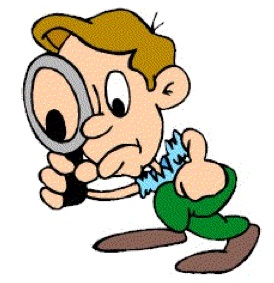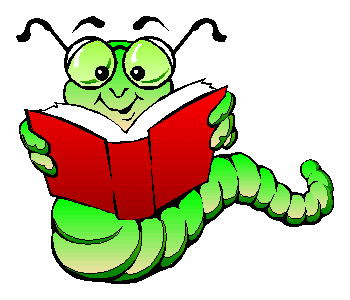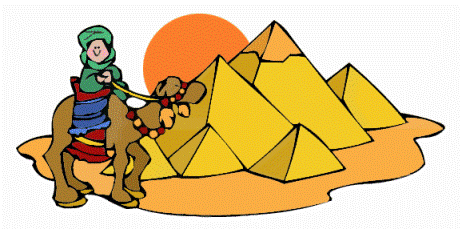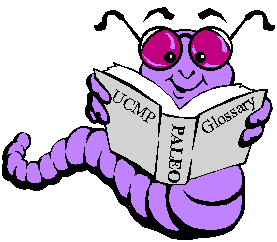Natural and Social Science
Modern Age: Glossary
absolute monarchy: form of government where the king or queen has absolute power on all aspects of his or her subjects’ life.
architect: a person who designs buildings.
astrolabe: ancient instrument used by navigators and astronomers to determine latitude, longitude and time of day. It also determines the altitude of the Sun, planets, stars and Moon.
authoritarian monarchy: the politic system in which the kings in 15th Century have all the power.
bourgeois: the inhabitant of walled towns, formed by craftsmen, merchants…
caravel: a light sailing ship with two or three masts and lateen sails used by the Spanish and Portuguese in the 15th and 16th Centuries.
Classical culture: name given to the influence of Ancient Greek or Roman civilizations on language, philosophy, art… in the Renaissance.
clergy: the official leaders of a religious belief. colonisation: n. the act or process of establishing colonies.
compass: an instrument that is used for finding directions. It has a dial and a magnetic needle that always points to the North.
craftsman: a man who makes things skilfully with his hands.
decline: the period when something approaches an end.
Discovery: the act of discovering a place or a thing.
Golden Age: a flourishing period in arts and literature that took place in Spain during the 16th and 17th Centuries.
literature: name given to all creative writing of recognised artistic value.
Modern Age: the term used by historians to refer a period in the History from 1492 (Discovery of America) until 1789 (French Revolution).
navigation: the guidance of ships from place to place.
painter: an artist who paints.
patron: a person who supports and gives money to artists, writers or musicians.
peasant: a person who works on the land.
portolan charts: European navigation maps based on realistic descriptions of harbours and coasts.
Renaissance: means re-birth. A cultural movement that spanned roughly from the 14th Century to the 17th Century. It began in Italy and it later spread to the rest of Europe.
sculptor: a person who creates sculptures.
sextant: navigational instrument used to measure the altitude of a celestial object above the horizon and to determine its latitude and longitude.
silk: valuable/delicate cloth made from the fine treads produced by certain insect larvae.
spice: any of a variety of pungent or aromatic vegetable substances used to for seasoning food.
writer: a person who writes books, stories or articles as a job.
The Enlightenment: a philosophical and cultural movement in the eighteenth century that stressed human reasoning over blind faith and encouraged scientific thinking.
Investigate about The Modern Age

1. When does the Modern Ages begin?
2. When does the Modern Ages end?
3. What does Renaissance mean?
4. What were the people of Renaissance most interested in?
5. Who supported artists, writers or musicians during the Renaissance?
El Descubrimiento de América
THE MIDDLE AGES
Life in The Middle Ages
Alba (6ºC) recommends...
Middle Ages: Glossary 2
keep: the strongest or central tower of a castle.
kingdom: a country, state, or territory ruled by a king or queen.
knight: a medieval gentleman-soldier, usually high-born, raised by a sovereign to privileged military status after training as a page and squire.
moat: a deep, wide defensive ditch surrounding a castle or town, typically filled with water.
mosque: a Muslim place of worship and prayer.
nobleman: man (or woman) who belongs to the aristocracy.
peasant: a member of the class constituted by small farmers and tenants, sharecroppers, and labourers on the land where they form the main labour force in agriculture.
pilgrim: a person who journeys to a sacred place for religious reasons.
reconquest: second or new acquisition by physical or moral force.
sword: a weapon with a long metal blade and a hilt with a handguard, used for thrusting or striking.
synagogue: a building where a Jewish assembly or congregation meets for religious worship and prayer.
Middle Ages: Glossary 1
alcazaba: a Moorish fortified building used for defence by the Arabs in Spain.
armour: the metal coverings formerly worn by knights to protect the body in battle.
bailey: the open area within a castle fortification.
castle: a large fortified building or group of buildings, typically of the medieval period.
church: a building for public, especially Christian worship.
monks: the body of people ordained for religious duties in the Christian Church.
craftsman: a worker skilled in a particular craft or manual job.
drawbridge: a bridge which is hinged at one end so that it can be raised.
feudalism: the social system in medieval Europe, in which the nobility held lands from the Crown in exchange for military service, and vassals were tenants of and protected by the nobles.
guild: a medieval association of craftsmen or merchants.

Investigate about the MIDDLE AGES

1. When do the Middle Ages begin?
2. When do the Middle Ages end?
3. What event marks the beginning of the Middle Ages?
4. What event marks the end of the Middle Ages
5. What religions coexisted in Spain in the Middle Ages?
6. How was society organized?
7. What was the job of the king?
8. What was the job of the noblemen?
9. What was the job of the knights?
10. What was the job of the clergy?
11. What was the job of the peasants?
12. What were the guilds?
13. How many kingdoms were there in Iberian Peninsula in the Middle Ages?
14. Name three differences between the Muslims and the Christians.
15. What were castles and alcazabas for?
16. What were churches, mosques, and synagogues for?
MAPA FÍSICO Y SOCIOECONÓMICO DE ESPAÑA
Seguro que estos mapas te ayudan a repasar la geografía física y socioeconómica de España.
NUMANTIA (NUMANCIA in Spanish)
Numantia is the name of an ancient Celtiberian settlement, whose remains are located 7 km north of the city of Soria, on a hill known as Cerro de la Muela in the municipality of Garray.
Numantia is famous for its role in the Celtiberian Wars. In the year 153 BC Numantia experienced its first serious conflict with Rome. After 20 years of hostilities, in the year 133 BC the Roman Senate gave Scipio Aemilianus Africanus the task of destroying Numantia. He laid siege to the city, erecting a nine kilometre fence supported by towers, moats, impaling rods and so on. After 13 months of siege, the Numantians decided to burn the city and die free rather than live and be slaves.
Read more.
Ancient Egypt

Egypt is one of the most fertile areas of Africa, and one of the most fertile of the countries around the Mediterranean Sea. Because Egypt is so fertile, people came to live in Egypt earlier than in most places, probably around 40,000 years ago. At first there were not very many people, but gradually Egypt became more crowded, so there was more need for a unified government. For a while there seem to have been two kingdoms, which we call Upper Egypt (in the south) and Lower Egypt (in the north). Around 3000 BC (5000 years ago), at the beginning of the Bronze Age, the king of Upper Egypt conquered the king of Lower Egypt and made Egypt into one kingdom, Egypt. People called the ruler of this new kingdom the Pharaoh.
Read more.
Do you want to know more and have fun learning about Ancient Egypt??
Here is my selection of websites all related to Ancient Egypt.
Happy surfing!!
Virtual tour to an Egyptian Museum
Ancient History: Glossary 3
Latin: language of the Roman city area, later spoken all over the Roman Empire.
North: the direction which is up from the centre line of the Earth (Equator).
Northern tribes: native tribes living in the Northern part of Spain before the Roman invasion.
Phoenicians: ancient civilization with maritime trading culture across the Mediterranean.
Roman Empire: phase of the ancient Roman civilization characterized by an autocratic form of government and large territorial holdings in Europe and the Mediterranean.
Roman Monarchy: phase of the Ancient Roman civilization characterized by the power of a king.
Roman Republic: phase of the Ancient Roman civilization where the Senate had the power to control the army.
Romans: ancient people from the city of Rome, who conquered almost all Europe and the Mediterranean countries, and made them provinces in the Roman Empire.
soldier: member of an army. Someone who serves in the military forces of a country.
South: the direction which is down from the centre line of the Earth (Equator).
temple: building for the worship of gods.
West: the direction towards which the sun sets; the direction which is on the left of a person facing North.

What do you want to know today?
Kidipede - History and Science for Kids
Ancient History: Glossary 2
Celts: European people who once occupied part of Spain, whose modern descendants include the Welsh and the Bretons.
circus: a large oblong space surrounded by seats for the public in which chariot races took place in Rome.
collapse: to fail suddenly and completely; break down.
conquer: to take control of a country or city and its people by force, especially in a war.
Egyptians: ancient civilization from Egypt. They built pyramids, wrote with hieroglyphics and used the decimal system.
East: the direction from which the sun rises; the direction which is on the right of a person facing North.
forum: open place used for public business , where the Ancient Romans went to do their banking, trading, shopping…
Galician: language spoken in the Galician area, in the Northwest of Spain.
Greeks: ancient civilization from Greece, very important in Ancient History. They changed many things in Philosophy, Sports, Politics, Religion…
Iberians: ancient people that lived in the Iberian Peninsula before the Romans.
influence: influence to have an effect on someone or something without the use of direct force or command.
invasion: to attack in war when the enemy spreads into and tries to control a country, city…

Ancient History: Glossary 1
Ancient History: period of History starting with the first written evidences and finishing with the fall of the Roman Empire.
amphitheatre: large roofless building with rows of seats on a slope all round a central area.
aqueduct: bridge or pipe that carries water, especially one that is built higher than the land around it or that goes across a valley.
Basque: a native or inhabitant of the Basque country. The language of the Basque people; not related to any other language.
baths: place where Romans spent their free time going to thermal baths where they kept their bodies clean and where they chatted and took important decisions.
Carthaginians: ancient civilization coming from the city of Carthage in Tunisia.
Castilian: a native or inhabitant of Castile. One of the official languages of Spain, based on the ancient dialect of Castile; nowadays it is known as Spanish.
Catalan: a native or inhabitant of Catalonia in Eastern Spain. The language spoken there.
Celt-Iberians: group originated due to the integration of some Celts with the local Iberians in the Spanish Peninsula.

Investigate about ANCIENT HISTORY

1. Who lived in the Iberian Peninsula before the Romans?
2. When does Ancient History begin?
3. When does Ancient History end?
4. Did the Romans conquer the entire Peninsula?
5. Which event marks the difference between BC-AD?
6. Which Spanish languages come from Latin?
7. What are the most important evidences of Roman heritage in Spain?
8. Which were the most important civilizations that lived in Spain before the Romans?
9. How did the Romans change the life in Spain?
10. Which Ancient culture left the first writings?
11. Who were the most important civilizations in Ancient History?
12. What do you already know about Ancient History?
The ocean makes life on Earth possible, and it needs our help.
Most people don’t realize the long list of benefits the ocean provides us, nor how much we are connected and dependent on it. Just to name a few things; the ocean produces 70 to 80% of the oxygen we breath, generates $21 trillion in ecosystem services each year, and provides the main source of protein for 1/4 of the world’s population. And these are just a few of the amazing functions it offers this planet’s 6+billion people.
In the past 50 years the health of the ocean has declined dramatically due to the major 5. That’s right, the major 5. There are five serious threats that are causing this havoc; over fishing, pollution, invasive species, habitat destruction, and climate change.
Actions must be taken to address these problems in order for the ocean to recover and become healthy once again.
Come explore the ocean with us and find out how you can help.
KidsPast.com is packed with articles from early man, to recent historical events.
Enjoy learning about history!